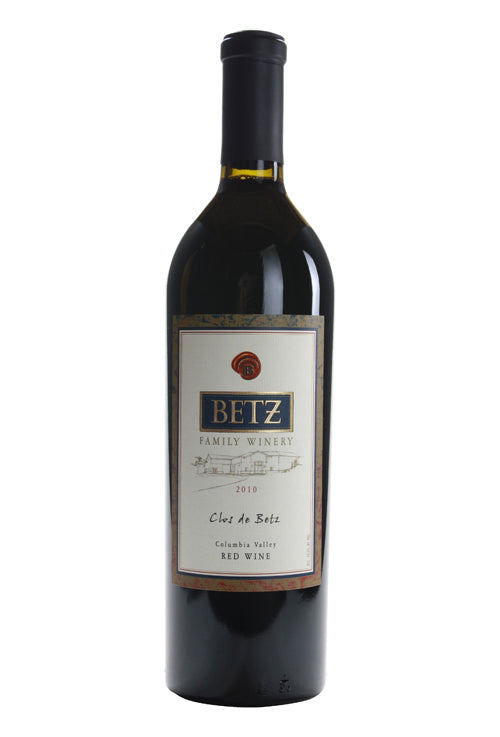1
/
of
1
Betz Family Clos de Betz - 2015 (750ml)
Betz Family Clos de Betz - 2015 (750ml)
Regular price
$119.99
Sale price
$119.99
Regular price
$119.99
Unit price
/
per
Availability:
1 In Stock
$25 Shipping on Orders +$299
Couldn't load pickup availability
Share :

- varietal
- Region
- Sub - Region
- Type
- Reviews
Pinot Noir is responsible for some of the world’s finest wines. Famed for producing the red wines of Burgundy and the Côte d’Or in particular, it is now widely grown in cool climates across Califonia and Oregon, and with increasing success in New Zealand. Although typically used to produce varietal wines, Pinot Noir makes a significant contribution in the wines of Champagne, where it is vinified as a white wine and blended with Cardonnay and Pinot Meunier. On the whole, fresh summer fruit of strawberries, raspberries and red cherries tend to be the identifying qualities, however richer versions express darker fruit including black cherries (kirsch), cherry cola, leather and violets to name a few.
Two hundred miles south east of Paris lies the famous and historic wine region, known in French as Bourgogne. The Cote d'Or, the heartland of the region, consists of two distinct sub-regions split on either side of the town of Beaune.The Côte de Nuits to the north, includes the famous villages of Vosne-Romanee, Gevrey-Chambertin, and Nuits-Saint-Georges and are known primarily for making red wine from Pinot Noir.Although The Côte de Beaune to the south still makes some magnificent reds (see Volnay and Pommard), white wine made from Chardonnay is the main focus. The most famous villages are Puligny-Montrachet and Meursault. Burgundy has three other important regions. The village of Chablis (exclusively Chardonnay) encompassing the region's most northerly vineyards. The Côte Chalonnaise and Mâconnais to south are quantitatively speaking more important. Agriculture is more diverse with a significant portion of the land devoted to livestock and arable farming.
Volnay is a small, exclusively red wine commune, located between Pommard to the north and Meursault to the south. Volnay produces some of the most fragrant and sumptuous reds in the cote de Beaune, fit for the Celtic water deity, de Volen, for which the town is named. Interestingly, it was here in the 1930s, thanks to the current Marquis d’Angerville’s father falling out with local merchants - resulting in him having to bottle himself - that the trend of domaine bottling started in the region. In common with Pommard, Volnay has no grand crus, however with more than half of the vineyards classified premier cru (35 in total) and a complex geology, there are a wealth of rewarding wines to try. Confusingly, one of the most sought after wines actually comes from the adjoining vineyard - Les Santenots-du-Milieu – in Meursault, but because Meursault is known for its whites, it is bottled as Volnay Santenots. Within the village itself, the vineyards attaining the highest acclaim are located at the southern end, with Les Caillerets, Les Champans, and, directly up the hill above them, Clos de Chenes and Taillepieds. However the vineyards to the north also produce a variety of delightful wines. Marquis d’Angerville’s small monopole, Clos de Ducs, is an example in point. Meanwhile, those of Les Chanlins and Les Fremiets, abutting Pommard, seem to synthesize the delicacy of Volnay and the muscular nature of its neighboring commune.
Red wine is wine made from dark-coloured grape varieties. The color of red differs based on the grapes variety or varieties used.
Interestingly, black grapes yield a juice that is greenish-white. The actual red color comes from anthocyan pigments (also called anthocyanins) from the skin of the grape (exceptions are the relatively uncommon teinturier varieties, which produce a red colored juice). Most of the production centers around the extraction of color and flavor from the grape skin.


